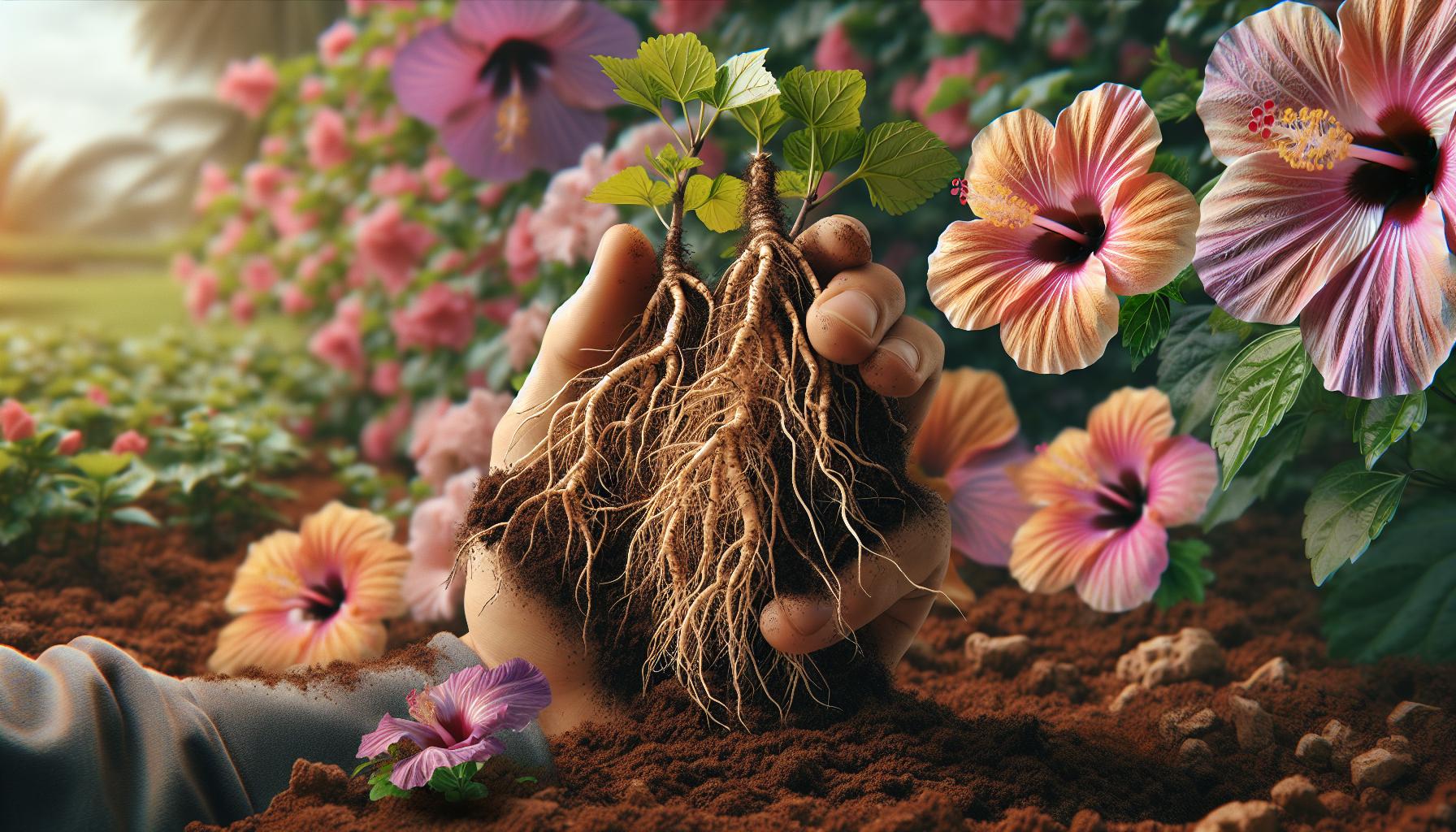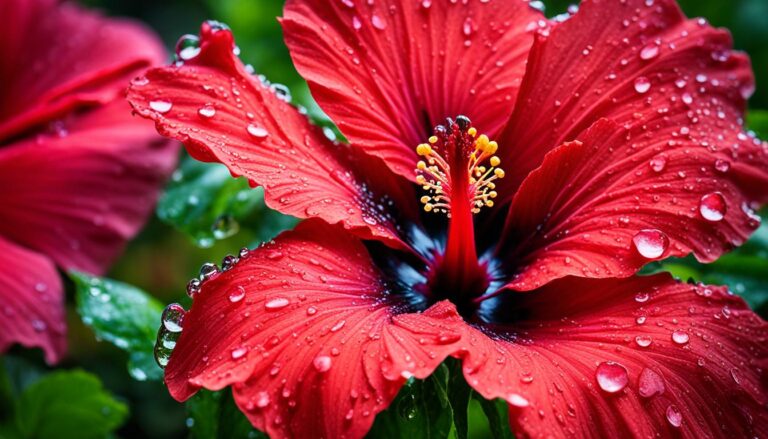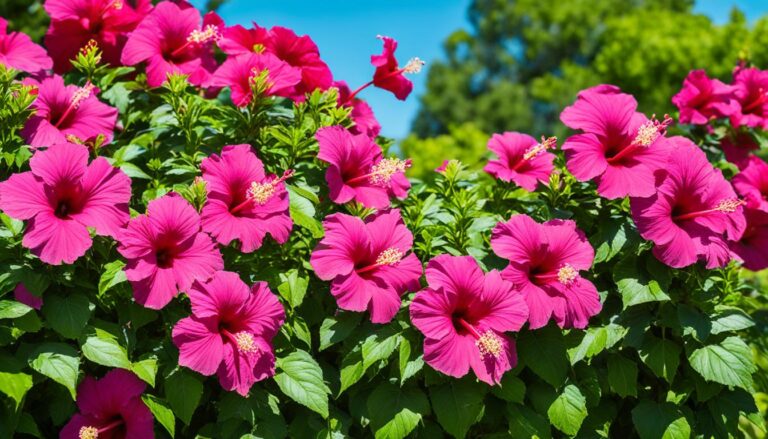Hibiscus Roots: Health Benefits, Growing Tips, and Medicinal Uses Revealed
As a passionate gardener, I’ve always been fascinated by the hidden wonders beneath our favorite plants. Today, I’m excited to explore the often-overlooked world of hibiscus roots. Did you know these underground powerhouses play a crucial role in the plant’s survival and stunning blooms?
Hibiscus roots are more than just anchors for these beautiful flowering shrubs. They’re complex systems that absorb nutrients, store energy, and even help the plant adapt to various environmental conditions. But what makes hibiscus roots so special? And how can understanding them help you grow healthier, more vibrant hibiscus plants in your garden?
What Are Hibiscus Roots?
Hibiscus roots are the underground structures of hibiscus plants that anchor them to the soil and facilitate nutrient absorption. These essential components play a crucial role in the plant’s overall health and development.
Anatomy of Hibiscus Roots
Hibiscus roots consist of several key parts, each serving a specific function:
- Taproot: The primary, thick root that grows vertically into the soil
- Lateral roots: Smaller roots branching off from the taproot
- Root hairs: Microscopic structures on lateral roots that absorb water and nutrients
- Root cap: A protective layer at the tip of growing roots
- Vascular tissue: Xylem and phloem for transporting water and nutrients
The root system’s structure varies depending on the hibiscus species and growing conditions. Some hibiscus plants develop extensive root networks, while others have more compact systems.
Types of Hibiscus Plants
Hibiscus plants come in various species and cultivars, each with unique root characteristics:
- Tropical hibiscus (Hibiscus rosa-sinensis):
- Shallow root system
- Prefers well-draining soil
- Sensitive to overwatering
- Hardy hibiscus (Hibiscus moscheutos):
- Deep, extensive root system
- Tolerates wet conditions
- Adapts well to various soil types
- Rose of Sharon (Hibiscus syriacus):
- Fibrous root system
- Drought-tolerant once established
- Can be invasive in some regions
- Chinese hibiscus (Hibiscus rosa-sinensis):
- Shallow, spreading root system
- Ideal for container growing
- Requires regular watering
Understanding the root characteristics of different hibiscus types helps in providing optimal care and creating suitable growing environments for these beautiful plants.
Benefits of Hibiscus Roots

Hibiscus roots offer a range of benefits beyond anchoring the plant and absorbing nutrients. These versatile plant parts possess valuable medicinal properties and culinary uses that have been utilized for centuries in various cultures.
Medicinal Properties
Hibiscus roots contain powerful compounds with potential health benefits. They’re rich in antioxidants, which help combat free radicals and reduce oxidative stress in the body. Traditional medicine systems, including Ayurveda and Chinese herbalism, have long used hibiscus root extracts to treat various ailments. Some potential medicinal benefits include:
- Anti-inflammatory effects
- Blood pressure regulation
- Digestive health support
- Fever reduction
- Liver protection
Research suggests that hibiscus root extracts may have antimicrobial properties, potentially effective against certain bacteria and fungi. While more studies are needed to confirm these effects, the traditional use of hibiscus roots in herbal remedies highlights their potential medicinal value.
Culinary Uses
Hibiscus roots aren’t just for medicinal purposes; they also have culinary applications. In some cuisines, particularly in parts of Africa and Asia, hibiscus roots are incorporated into dishes for their unique flavor and potential health benefits. Culinary uses of hibiscus roots include:
- Tea infusions: Dried and ground roots are steeped to create a flavorful, caffeine-free tea.
- Soups and stews: Chopped or grated roots add depth to savory dishes.
- Spice blends: Powdered hibiscus root is sometimes used in spice mixtures.
- Flavoring agent: The roots can impart a subtle, earthy flavor to various recipes.
When preparing hibiscus roots for culinary use, it’s essential to ensure they’re from edible varieties and properly cleaned. As with any new food ingredient, it’s advisable to consult with a healthcare professional before incorporating hibiscus roots into your diet, especially if you have pre-existing health conditions or are taking medications.
Growing and Caring for Hibiscus Roots
Proper care for hibiscus roots ensures healthy plant growth and abundant blooms. Understanding the specific needs of hibiscus roots is crucial for successful cultivation.
Soil Requirements
Hibiscus roots thrive in well-draining, nutrient-rich soil with a pH between 6.0 and 6.5. I recommend using a mixture of loamy soil, peat moss, and perlite to create an ideal growing medium. This combination provides excellent drainage while retaining enough moisture for healthy root development. Adding organic matter, such as compost, improves soil structure and nutrient content. Avoid heavy clay soils, as they can lead to waterlogging and root rot.
Watering and Fertilization
Hibiscus roots require consistent moisture without becoming waterlogged. I water deeply when the top inch of soil feels dry, typically 2-3 times per week during the growing season. Reduce watering frequency in winter. Mulching around the plant base helps retain soil moisture and regulate temperature. For fertilization, I use a balanced, water-soluble fertilizer (10-10-10) every 2-3 weeks during the growing season. Alternatively, slow-release granular fertilizers applied monthly provide steady nutrition. Avoid over-fertilizing, as it can lead to excessive foliage growth at the expense of blooms.
Harvesting Hibiscus Roots
Harvesting hibiscus roots requires careful timing and proper techniques to ensure the plant’s health and maximize the root’s potential uses. Here’s what you need to know about harvesting hibiscus roots effectively.
When to Harvest
The optimal time to harvest hibiscus roots is during the plant’s dormant period, typically in late fall or early winter. This timing allows the plant to store maximum nutrients in its roots. I’ve found that waiting until after the first frost, when the leaves have fallen, yields the best results. For perennial hibiscus varieties, harvesting roots from plants that are at least 2-3 years old ensures a well-developed root system.
Proper Harvesting Techniques
To harvest hibiscus roots correctly, I follow these steps:
- Water the soil: Moisten the soil around the plant 24 hours before harvesting to make digging easier.
- Cut back foliage: Trim the above-ground parts of the plant to about 6 inches.
- Dig carefully: Use a garden fork or spade to dig a wide circle around the plant, at least 12 inches from the stem.
- Lift gently: Carefully lift the root ball from the ground, minimizing damage to the roots.
- Clean the roots: Shake off excess soil and rinse the roots with water.
- Trim and divide: Cut away any damaged parts and divide larger root systems if desired.
- Dry properly: Allow the roots to air dry in a shaded, well-ventilated area for 24-48 hours before processing or storing.
By following these techniques, I ensure the roots are harvested efficiently while preserving the plant’s health for future growth or propagation.
Preparing and Storing Hibiscus Roots
Proper preparation and storage of hibiscus roots are crucial for maintaining their quality and potency. Here’s how to clean, process, and store these valuable plant parts effectively.
Cleaning and Processing
I start by gently washing the harvested hibiscus roots under cool running water to remove soil and debris. Using a soft-bristled brush, I carefully scrub away any remaining dirt, taking care not to damage the delicate root structure. After cleaning, I pat the roots dry with a clean towel to remove excess moisture. To process the roots, I cut them into smaller, uniform pieces using a sharp knife. This step increases surface area for drying and makes future use more convenient. I then spread the root pieces on a clean, dry surface in a well-ventilated area, away from direct sunlight. Depending on humidity levels, the drying process typically takes 3-5 days. The roots are ready for storage when they feel brittle and snap easily.
Storage Methods
For long-term preservation, I use airtight containers to store dried hibiscus roots. Glass jars with tight-fitting lids or vacuum-sealed bags work best to protect against moisture and air exposure. I label each container with the date of harvest and storage to track freshness. Stored in a cool, dark place like a pantry or cupboard, dried hibiscus roots maintain their potency for up to 12 months. For short-term use, I keep a small amount of dried roots in a dark-colored glass jar in the kitchen, away from heat sources and direct light. If I need to store fresh roots temporarily, I wrap them in slightly damp paper towels, place them in a perforated plastic bag, and refrigerate for up to a week. This method helps maintain moisture without encouraging mold growth.
Potential Side Effects and Precautions
While hibiscus roots offer numerous benefits, it’s crucial to be aware of potential side effects and take necessary precautions. Understanding these risks helps ensure safe consumption and use of hibiscus roots.
Interactions with Medications
Hibiscus roots can interact with certain medications, potentially altering their effectiveness or causing adverse reactions. These interactions include:
- Blood pressure medications: Hibiscus roots may enhance the effects of antihypertensive drugs, leading to excessively low blood pressure.
- Diabetes medications: The roots might interfere with blood sugar control, necessitating dose adjustments for diabetic patients.
- Chloroquine: Hibiscus roots can decrease the absorption of this antimalarial drug, reducing its efficacy.
- Acetaminophen: Consuming hibiscus roots alongside this pain reliever may alter its metabolism in the liver.
I recommend consulting a healthcare professional before using hibiscus roots if you’re taking any medications, especially those for blood pressure, diabetes, or malaria.
Allergic Reactions
While rare, allergic reactions to hibiscus roots can occur. Symptoms of an allergic reaction may include:
- Skin rashes or hives
- Itching or swelling, particularly of the face, tongue, or throat
- Difficulty breathing or wheezing
- Nausea or vomiting
- Dizziness or lightheadedness
If you experience any of these symptoms after consuming or using hibiscus roots, discontinue use immediately and seek medical attention. People with known allergies to plants in the Malvaceae family should exercise caution when using hibiscus roots.
- Start with small amounts when first using hibiscus roots
- Perform a patch test before applying hibiscus root preparations to the skin
- Be aware of any existing allergies to related plants
Conclusion
Hibiscus roots are a remarkable part of this vibrant plant offering numerous benefits for health gardening and culinary pursuits. From their vital role in plant health to their potential medicinal properties these roots have much to offer. However it’s crucial to approach their use with caution particularly regarding potential side effects and interactions. Whether you’re growing hibiscus for its stunning blooms or harvesting its roots for various applications proper care and knowledge are essential. As with any herbal remedy always consult a healthcare professional before incorporating hibiscus roots into your wellness routine. By understanding and respecting the power of hibiscus roots we can fully appreciate their potential while ensuring safe and effective use.







